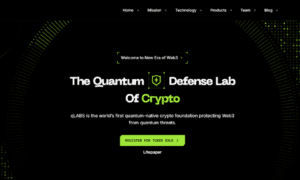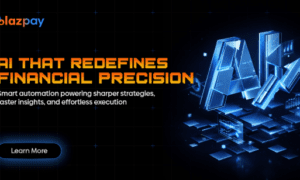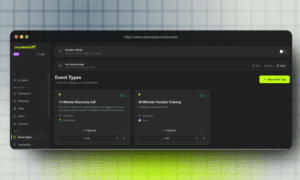Efficient and accurate data extraction has become essential for business operations, helping teams make faster decisions and reduce manual workloads. While Optical Character Recognition (OCR) has historically laid the groundwork for digitizing text, it often falls short in handling today’s dynamic and diverse document formats. To bridge this gap, businesses are increasingly turning to next-generation data extraction technologies, which are Docparser alternatives that offer enhanced flexibility, context-aware insights, and deeper integration capabilities. This blog explores how the evolution of document processing is unlocking value through smarter, AI-powered solutions.
To understand why modern solutions are needed, it’s important to start with the limitations of traditional OCR.
The Limitations of Traditional OCR
Traditional OCR has played a significant role in digitizing documents and converting printed text into machine-readable formats. However, its effectiveness diminishes significantly when dealing with:
- Varied Document Layouts: OCR systems struggle with documents that feature non-standard layouts, varying fonts, and intricate designs. This often results in incomplete or inaccurate data extraction.
- Complex Elements: Tables, images, and graphs pose challenges for traditional OCR, which typically focuses on linear text extraction. Consequently, valuable insights embedded in these formats may be overlooked.
- Lack of Contextual Understanding: Traditional OCR cannot interpret the context of the extracted data, leading to potential misinterpretations and loss of meaning.
These limitations underscore the need for advanced solutions that can handle the complexities of modern data extraction.
From OCR to Intelligent Automation
As businesses contend with increasingly complex documents, data extraction has evolved beyond basic OCR into more intelligent systems. These solutions use artificial intelligence (AI) and machine learning (ML) to:
- Comprehend Document Structure: AI-powered tools can analyze layouts and identify data relationships, leading to more accurate and efficient extraction.
- Automate Classification: Documents are categorized automatically based on content, improving workflow speed and consistency.
- Improve Accuracy Over Time: With machine learning, systems learn from previous data interactions, enabling them to refine and enhance future extractions.
This shift not only boosts productivity but also ensures greater accuracy and relevance in the data collected.
Key Features of Next-Generation Data Extraction Solutions
Next-generation data extraction solutions boast a variety of innovative features that enhance their functionality and usability. Some of these features include:
1. Advanced Data Extraction Techniques
- Zonal OCR: This technique allows users to define specific areas within a document for data extraction, improving accuracy by focusing on relevant sections.
- Table Extraction: Advanced systems can accurately extract data from complex tables, ensuring that information is preserved in its intended format.
2. Contextual Understanding
- Natural Language Processing (NLP): NLP capabilities enable systems to understand and interpret the meaning behind the extracted text, providing deeper insights into the data.
- Semantic Analysis: This feature allows systems to discern relationships between different data points, ensuring that context is maintained during extraction.
3. Integration Capabilities
- Seamless Connectivity: Modern data extraction solutions can integrate with various applications and platforms, such as cloud storage services, Google Drive, Dropbox, and data management systems, facilitating smooth data workflows.
- APIs for Customization: Many solutions offer API access, allowing businesses to tailor the data extraction process to meet specific operational needs.
The benefits of next-gen data extraction are evident across various sectors. Let’s examine how different industries are implementing these tools.
Applications Across Industries
Next-generation data extraction technologies are being utilized across a multitude of sectors, each benefiting from the enhanced accuracy and efficiency these tools provide. Some notable applications include:
1. Financial Services
In finance, the ability to extract and analyze data from complex documents such as bank statements and loan applications is critical. Next-generation solutions streamline the credit analysis process, enabling financial institutions to make informed decisions quickly.
2. Healthcare
The healthcare industry relies heavily on accurate data extraction from patient records, insurance forms, and clinical documents. Advanced extraction technologies ensure that critical information is captured accurately, improving patient care and operational efficiency.
3. Legal Sector
Legal professionals deal with numerous complex documents, including contracts and case files. Intelligent document processing solutions help legal teams efficiently organize and analyze these documents, ensuring that important information is readily accessible.
Even with automation, human oversight remains crucial. Here’s why.
The Importance of Human Oversight in Automated Systems
While automation significantly reduces manual effort, human oversight plays a critical role in maintaining data quality. Combining automation with human review ensures:
- Error Mitigation: Human reviewers can spot and correct anomalies that automated systems may miss.
- Enhanced Context: Analysts provide nuanced understanding that reinforces the accuracy and usefulness of the extracted data.
In the next section, we will explore the trends shaping the future of data extraction technology.
Future Trends in Data Extraction Technology
As technology continues to advance, several trends are shaping the future of data extraction solutions:
1. Increased Use of AI and ML
The integration of AI and ML will continue to drive improvements in data extraction accuracy and efficiency. These technologies will enable systems to learn from vast amounts of data, adapting to new formats and complexities in real time.
2. Enhanced User Interfaces
User-friendly interfaces will become increasingly important as organizations seek to empower their teams with data extraction tools. Intuitive designs and simplified workflows will facilitate easier adoption and usage.
3. Greater Focus on Security and Compliance
As data privacy concerns grow, next-generation data extraction solutions will need to prioritize security and compliance. This includes implementing robust encryption methods and adhering to industry regulations to protect sensitive information.
Next, we will be going over the factors to be considered while choosing a data extraction solution.
Choosing the Right Data Extraction Solution
Selecting the appropriate data extraction solution for your organization involves careful consideration of several factors:
- Specific Needs: Assess the types of documents and data you need to extract and their complexity.
- Integration Requirements: Ensure that the solution can seamlessly integrate with your existing systems and workflows.
- Scalability: Choose a solution that can grow with your organization, accommodating increasing data volumes and evolving requirements.
Conclusion
Data extraction is rapidly evolving, moving beyond traditional OCR to embrace advanced technologies that enhance accuracy, efficiency, and contextual understanding. Intelligent Document Processing (IDP) and other next-generation solutions offer businesses the tools they need to thrive in an increasingly data-driven world. By using these technologies, organizations can unlock valuable insights from their documents, driving informed decision-making and operational excellence. As you consider your data extraction needs, remember that investing in the right solution, like Docsumo can significantly enhance your organization’s ability to utilize the power of data.





























